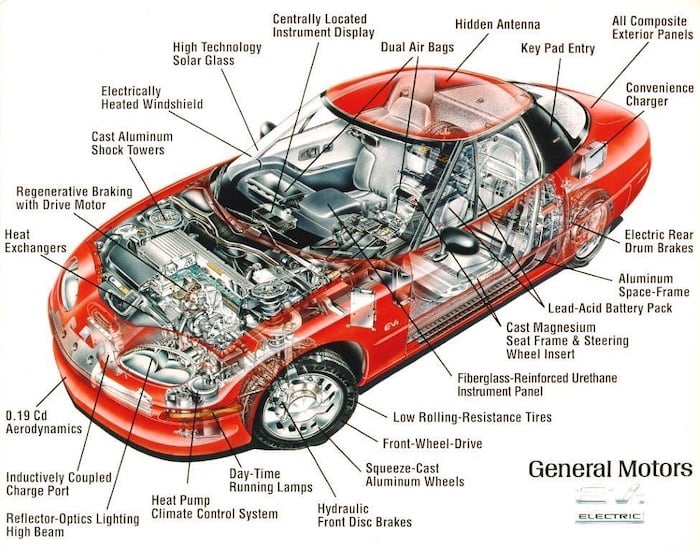Last month saw a bunch of new ensors targeting different aspects of both conventional and electric vehicles. As OEMs add new features to improve the comfort and utility of automobiles, electronics designers can use the latest sensors to update legacy designs and jump-start new developments.

As ICE-driven and electric vehicles continue to develop, new sensors and control systems can improve existing automobile features. Image used courtesy of the Smithsonian
This article takes a closer look at the utility of the new sensors and discusses the trend toward more functional and densely-integrated vehicles.
Long-Range Vision
Leading off this automotive technology roundup is the Sony Semiconductor Solutions (SSS) CMOS image sensor purpose-built to extend the range of automotive vision systems. With the “industry’s highest” pixel count for an automotive sensor at 17.42 MP, the IMX735 sensor offers improved detection near and away from the vehicle.
Although cameras are usually the go-to option to recreate the way that humans process information on the road, a poorly performing sensor can limit a vehicle’s ability to recognize and respond to a hazard, especially at a high speed. As such, the IMX735 could greatly benefit designers looking to deploy more sophisticated autonomous driving algorithms.

The IMX735 zoomed image output (left) shows considerably better resolution than legacy Sony systems (right). Image used courtesy of Sony
The sensor itself integrates with existing automotive sensors such as LiDAR. In this example, the horizontal scanning of the IMX735 compared to the vertical scanning of existing sensors matches the scanning pattern for LiDAR, allowing easier synchronization with multiple sensors. The Sony IMX735 is currently shipping in sample quantities.
Smarter TPMS Systems
Moving where the rubber meets the road, Infineon announced a MEMS sensor that cooperates with a microcontroller and peripherals for tire pressure monitoring systems (TPMS). Using a patented glass-silicon-glass MEMS pressure sensor and a 32-bit Arm M0+ core, the SP49 (datasheet linked) gives automotive designers new flexibility in designing TMPS controllers.

The pressure measurement interface integrates with the MCU and onboard communications transceivers, allowing for the rapid development of TPMS controllers. Image used courtesy of Infineon
In addition to reading and displaying tire pressures, the SP49 could also be leveraged to provide more functionality for the end user in the form of inflation assistance, blowout detection, or even load detection. The SP49 is available in the same form factor as the legacy SP40, allowing for an easy transition to the newer and more powerful TPMS sensor.
The SP49 also supports power efficiency with ultra-low power consumption and wake-up compatibility. Outside of TPMS systems, the SP49 could be used in any system requiring high-pressure measurements.
Isolated IVT Measurements
Focusing more on EVs, Melexis launched the MLX91230 IVT sensor built to remove key pain points for EV battery management system (BMS) designers. Instead of having to use shunt or fluxgate systems to measure current, the MLX91230 (link downloads datasheet as PDF) uses the Hall effect to monitor the current in a wire.
The Hall effect leverages the magnetic field generated by a DC current to create an output voltage proportional to the current without requiring contact with the wire itself. As such, the MLX91230 offers designers improved thermal efficiency without having to accept a higher cost or volume for the sensor.

The MLX91230 includes the ability to sense battery current, voltage, and temperature, making the chip a one-stop shop for BMS solutions. Image used courtesy of Melexis
The chip also includes voltage and temperature measurements, giving designers a one-chip solution for monitoring the health of EV batteries. Melexis guarantees a 1% accuracy over the lifetime of the device and complies with the necessary standards for inclusion in a vehicle. The onboard MCU also allows designers to easily integrate the BMS with central processors for faster development.
Sensors Driving Innovation
In addition to the three companies listed here, many more are putting their best foot forward when it comes to automotive electronics. As the industry continues to grow and make use of the latest technologies, the need for smarter and more efficient electronics will require developers to create more precise sensors.
